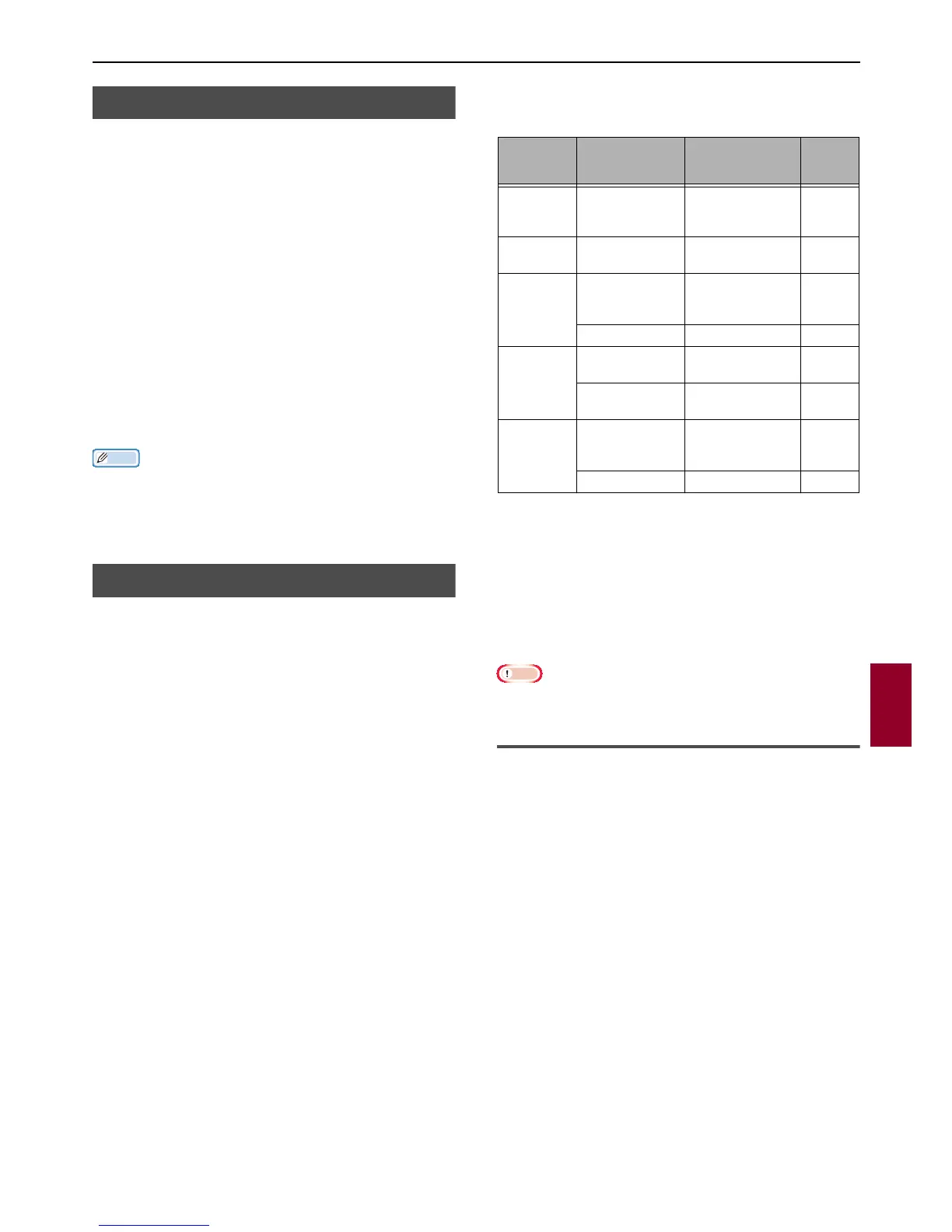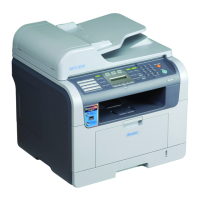Changing Network Settings From the Web Page
- 121 -
Network Settings
7
Using SNMPv3
When you use the SNMP manager that supports
SNMPv3, the management of the machine is
encrypted by SNMP.
1 Access the machine's web page and log
in as the administrator.
2 Select [Admin Setup].
3 Select [Network Manager]>[SNMP]>
[Setting].
4 Follow the on-screen instructions to
specify detailed settings.
5 Click [Send].
The network card reboots to enable the new
settings.
Memo
Your machine has an SNMP agent. You can confirm and
change the machine settings by a commercially available
SNMP agent. For the MIB of the machine, refer to the
software DVD-ROM and check the "README" file in the
[Misc] > [MIB] folder.
Using IPv6
Your machine supports IPv6. The machine
obtains the IPv6 address automatically. You
cannot set the IPv6 address manually.
The machine supports the following protocols:
For Printing:
- LPR
- IPP
- RAW (Port9100)
-FTP
For Configuration:
-HTTP
- SNMPv1/v3
- Telnet
Operation is confirmed under specific conditions
for the following applications.
*1) To specify a host name, edit the host's
file or access via the DNS server.
*2) On Telnet, when only IPv6 is enabled
you cannot specify a host name by the
DNS server.
*3) You cannot specify a host name when
you use a link local address to access.
*4) Enter an IPv6 address enclosed with
square brackets.
Note
To use IPv6 on Windows XP, install IPv6.
Enabling IPv6
1
Access the machine's web page and log
in as the administrator.
2 Select [Admin Setup].
3 Select [Network]>[TCP/IP].
4 Select [Enable] for [IPv6].
5 Click [Submit].
The network card reboots to enable the new
settings.
Protocol
OS
Application
Condi
tion
LPD Windows 7
Windows Vista
Windows XP
LPR (Command
Prompt)
*1, 2, 3
Port9100 Windows 7
Windows Vista
LPRng *1, 2, 3
FTP Windows 7
Windows Vista
Windows XP
FTP (Command
Prompt)
*1, 2, 3
Mac OS X FTP (Terminal) *1, 2, 3
HTTP Windows XP Internet Explorer
6.0
*1, 2, 3
Mac OS X Safari (2.0-
v412.2)
*1, 2,
3, 4
Telnet Windows 7
Windows Vista
Windows XP
Telnet (Command
Prompt)
*1, 2, 3
Mac OS X Telnet (Terminal) *1, 2, 3

